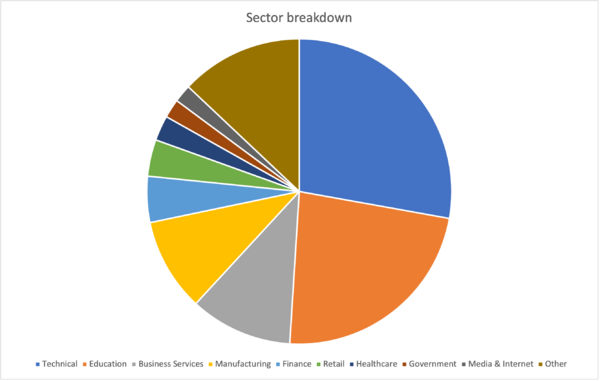Idea
OpenAI was established with the idea of advancing digital intelligence with an emphasis on the broader good of humanity. It aims to be at the forefront of artificial intelligence (AI) research, pushing boundaries and setting benchmarks for excellence. OpenAI's work ranges from machine learning algorithms to natural language processing models like GPT (Generative Pre-trained Transformer) series. Besides basic AI research, the organization is also involved in software development and has commercial products like the OpenAI API, which powers various applications of AI in the real world.
Mission statement
OpenAI's mission is to ensure that artificial general intelligence (AGI) benefits all of humanity. The organization has committed to use any influence it obtains over AGI’s deployment for the good of all and to avoid enabling uses that could harm humanity or unduly concentrate power. The mission encapsulates an ethical framework as well as a drive for technological development. OpenAI aims to ensure long-term safety in AGI, leading the charge in research and policy-making to make AGI safe, while also promoting the adoption of safety precautions across the AI community.
Products, services and projects
ChatGPT
- ChatGPT is a language-based chatbot written in Python that was released at the end of November 2022. It is built upon GPT-3.5 and GPT-4 models, models that are based on the transformer architecture developed by Google.
- It was originally released as a freely available software, but with its huge popularity it now operates as a freemium service with a $20 per month subscription.
- ChatGPT is trained with text from a wide variety of sources which include books, articles and websites from many different countries. This has enabled functionality of multiple languages and the ability to write in many different styles.
- The training of GPT-3 took several weeks on a set of powerful GPUs optimised for this purpose, in order to iteratively optimise the parameters using a massive data set.
- ChatGPT has many versatile applications which include but is not limited to content creation (such as writing poetry and short stories), drafting professional emails and teaching.
- The availability of the ChatGPT API has allowed developers to integrate it into their applications which could be used to enhance user interactions (designing a help-bot, search suggestions), for example.
- ChatGPT has its limitations in the sense that it learns patterns without understanding what they represent. Therefore, it has tendency to generate incorrect or nonsensical responses, such as code it provides or links to the internet (which frequently do not exist).
DALL-E
- DALL-E was introduced in January 2021 and in April 2022, DALL-E 2 was released as a more powerful image generation tool powered by artificial intelligence.
- It makes use of deep-learning technologies to be able to generate images from language descriptions, also known as prompts.
- OpenAI allowed integration of DALL-E 2 in developers’ own applications with the release of its API in November 2022. This operates on a cost per image basis, where the usage of images with higher resolutions would lead to greater charges.
- Despite using a language-based model powered by GPT to generate the images, DALL-E struggles with generating text as it only knows how to read a caption and draw an illustration. Therefore, it has no knowledge of images such as x-rays, blueprints and text and aims to simply produce a similar-looking image which leads to the contents of the image making no sense[1].
- There are also ethical concerns as the usage of large datasets could influence the model, such as generating more images of men than women when gender isn’t specified. OpenAI also confirmed that the model inserts words into prompts to address the bias in training the model, such as ‘an Asian woman’ when race isn’t specified[2].
- Another concern is that DALL-E could potentially replace photographers, artists and graphic designers due to their efficiency of generating anything the user wants.
Whisper
- Whisper is an automatic speech recognition system, trained with 680,000 hours of training data collected from the web[3].
- It is capable of transcribing speech in multiple languages, including translations to languages similar to English. It had been trained with data covering various accents to improve its accuracy in identifying sentences from people all around the globe.
- An application of Whisper is its usage in ChatGPT’s iOS mobile app, where users are able to ask prompts with their voice.
Revenue breakdown
OpenAI is valued to be around $29 billion in Febrary 2023.
ChatGPT is reported to have made less than $10 million in 2022, but has projected revenues of $200 million in 2023 and $1 billion in 2024[4]. This sharp increase is due to the rapidly increasing userbase, from 1 million in December 2022 to 100 million in February 2023.
It is estimated that it costs OpenAI $3 million a month to run ChatGPT due to the huge processing power it needs. This data is from December 2022 when there was significantly less traffic, so it is likely the cost of maintaining ChatGPT is much more now.
Microsoft has committed a multibillion dollar investment in OpenAI to partner with them and develop supercomputing systems powered with Azure, which is a cloud computing platform. This includes a $1bn investment in 2019 and a $10bn investment was announced in January 2023 [5]. This is reported that the deal entails 75% of OpenAI’s profits until the investment is reinbursed and a 49% stake in the company.

Leadership
Sam Altman, CEO
- Role: Responsible for overall company strategy, high-level decisions, and business partnerships.
- Background: Former president of Y Combinator, co-founder of multiple startups, and personal co-founder of OpenAI. Noted for expertise in entrepreneurship and investment.
Greg Brockman, President & Co-Founder
- Role: Involved in shaping OpenAI's strategy, thought leadership, and representation in public forums.
- Background: Former CTO of Stripe, a leading technology company specializing in online payment infrastructure. Known for deep technical expertise and strategic vision.
-
Brad Lightcap, COO (Role & Background Unknown)
- Role: responsible for daily company operations, human resources, logistics, and project management.
-
-
Ilya Sutskever, Co-Founder and Chief Scientist
- Role: Focuses on research and development, leading the scientific efforts in AI and machine learning.
- Background: Former Google Brain researcher, holds a Ph.D. in Machine Learning, and has made significant contributions to the field of deep learning.
-
Mira Murati, CTO (Role & Background Unknown)
- Role: oversees the technological direction of the company, manages the engineering team, and aligns technology goals with company strategy.
-
Janine Korovesis, VP Finance (Role & Background Unknown)
- Role: Responsible for financial management, including budgeting, forecasting, and reporting.
-
-
-
Bryan Banisaba, Chief of Staff (Role & Background Unknown)
- Role: Generally acts as the right-hand person to the CEO, assisting in a range of tasks including internal communications and strategic planning.
Ownership structure
Corporate strategy
Competitor analysis
DeepMind
- An artificial inteligence research company founded in the UK in 2010, and acquired by Google in 2014. It now belongs in Alphabet.
- It’s notable for developing neural networks that can imitate humans in activities such as playing video games, and computers that can mimic the short-term memory mechanism in the human brain.
- It is also famous for developing AlphaZero which uses deep reinforcement learning to defeat humans and other specialised computer software such as Stockfish in games including Chess, Go and Shogi.
- It has also made advances in biology by making significant advances in protein structure prediction.
- It is reported that DeepMind made around $890 million in 2021, a significant improvement from $60 million in 2020 and a $650 million loss in 2019[7].
Anthropic
Anthropic released Claude with partners including Notion, Quora and DuckDuckGo[8] which is a chatbot and a competitor for ChatGPT.
Claude is able to summarise long pieces of text, perform creative writing and engage in conversation. It is also able to detect tone and adjust its response accordingly.
It is estimated they make $15.4 million a year, which mostly comes from selling API access to Claude[9].
In late 2023, Google invested $300 milliion in Anthropic which lead to Google owning 10% stake in the company.
Cohere
- Cohere has many products working with text including summarisation, generation and classification, similar to the abilities ChatGPT and Claude possess.
- The main target of Cohere are enterprise users therefore they focus on high-performance, secure and reliable language models. They have currently raised $170 million and once it reaches $6 billion valuation additional funding would be obtained. It is estimated that Cohere made $2.3 million in 2021[10].
Historical and forward financials
Risks
Deal Rational
As of the writing of this report no financial data has been made available to the general public. The only indication of OpenAI's value is the investment size made to OpenAI by various Venture Capital firms (including Sequoia Capital, Andreessen Horowitz, Thrive and K2 Global) and large technology conglomerates (including Microsoft). The venture capital firms have invested just over $300 million and Microsoft has invested $10 billion. This gives OpenAI a valuation of $28 billion dollars. The venture capital firm's aims seem transparent enough however, microsoft's investment in OpenAI is much more nuanced (explored more in the next section).[11]
Microsoft's Investment Rational
- To supercharge its supercomputing division through vertical integration.
With ChatGPT running on the Microsoft Azure cloud system, the demand for Azure to have supercomputing capabilities will increase allowing Microsoft to 'future-proof' its cloud infrastructure. Azure in its current state was slated by reviews for its high cost and average performance. With the ChatGPT model running on the Azure cloud system, Microsoft will be able to hone their AI computing abilities and make the Microsoft Azure solution more reputable and capable (in terms of performance), not just for small scale cloud services but large and high complexity cloud services.
- To increase the competitiveness of Bing through vertical integration.
Microsoft's search engine Bing has long been inferior to Google's dominance over the market. However, Microsoft aims to supercharge Bing with the general intelligence power that ChatGPT has been known for. As recently as of March, Microsoft have confirmed this with the ChatGPT 4.0 model having successfully run Bing for its preview customers in March.[12]
- To stabilise Microsoft Azure's revenue.
With the lukewarm reviews Microsoft azure received, its revenue may not have been assured (as higher-demand clients choose fancier cloud solutions).[13] Microsoft's large investment in OpenAI assures Azure to be the exclusive cloud platform for all of OpenAI's services, bring consistent revenue to a new and turbulent sector.
- OpenAI is the safe option.
When Microsoft announced it $10 billion investment in OpenAI, it did so at a time of uncertainty in the market. High inflation and interest rates left the M&A market subdued pushing companies towards safer investments.[14] Considering Microsoft's initial investment of $1 billion into OpenAI in 2019, along with the success of its launch in November 2022 , the $10 billion investment seems like a very safe bet.
Capital Structure
While the exact information is not open to the public, a person familiar with the discussion said that the $10 billion dollar investment expected to be paid in cash instalments over a multi-year period. [15]
Precedent Transactions comparable to OpenAI
| Acquirer Name | Target Name | Date | Offer Value (in millions USD) |
| Deepmind technologies | 2014-01-26 | $ 500.00 | |
| Sales force | Tableau | 2019-08-01 | $ 15,700.00 |
| Broadcom | Symantec Enterprise Security Business | 2019-11-04 | $10,000.00 |
| Prosus | Just Eat | 2019-11-11 | $ 7,800.00 |
| Microsoft | Zenimax media (bethesda) | 2021-03-09 | $ 7,500.00 |
| Microsoft | 2016-12-08 | $26,200.00 | |
| Microsoft | Nuance Communications | 2023-03-01 | $19,700.00 |
| AMD | Xilinx | 2020-10-01 | $49,000.00 |
With OpenAI having an approximate valuation of $30 billion dollars based on a $300 million dollar share sale, the table above shows a list of comparable transactions in the TMT sector. The closest company in the table to OpenAI would be Deepmind which only achieved a valuation of $500 million. However, this was at a time when the limits and capabilities of AI weren't known.
Appendix and references
- ↑ https://spectrum.ieee.org/openai-dall-e-2
- ↑ https://www.theverge.com/2022/9/28/23376328/ai-art-image-generator-dall-e-access-waitlist-scrapped
- ↑ https://openai.com/research/whisper
- ↑ https://www.businessofapps.com/data/chatgpt-statistics/#:~:text=Artificial%20intelligence-,ChatGPT%20Projected%20Revenue,made%20less%20than%20%2410%20million.
- ↑ https://www.businessinsider.com/microsoft-investing-billions-into-chatgpt-creator-openai-partnership-2023-1?r=US&IR=T
- ↑ https://www.enterpriseappstoday.com/stats/openai-statistics.html
- ↑ https://guce.techcrunch.com/copyConsent?sessionId=3_cc-session_7cb3f704-03d6-43cc-b699-6cc7934411a5&lang=en-US#
- ↑ https://www.anthropic.com/index/introducing-claude
- ↑ https://nikolaroza.com/anthropic-ai-statistics-facts-trends-guide/#:~:text=Anthropic%27s%20estimated%20annual%20revenue%20is,popular%20website%20on%20the%20internet.
- ↑ https://aisupremacy.substack.com/p/the-top-six-rivals-competing-with
- ↑ https://techcrunch.com/2023/04/28/openai-funding-valuation-chatgpt/
- ↑ https://techcrunch.com/2023/03/14/microsofts-new-bing-was-using-gpt-4-all-along/
- ↑ https://uk.pcmag.com/cloud-services/73781/microsoft-azure
- ↑ https://www.pwc.com/gx/en/services/deals/trends.html
- ↑ https://www.bloomberg.com/news/articles/2023-01-23/microsoft-makes-multibillion-dollar-investment-in-openai






